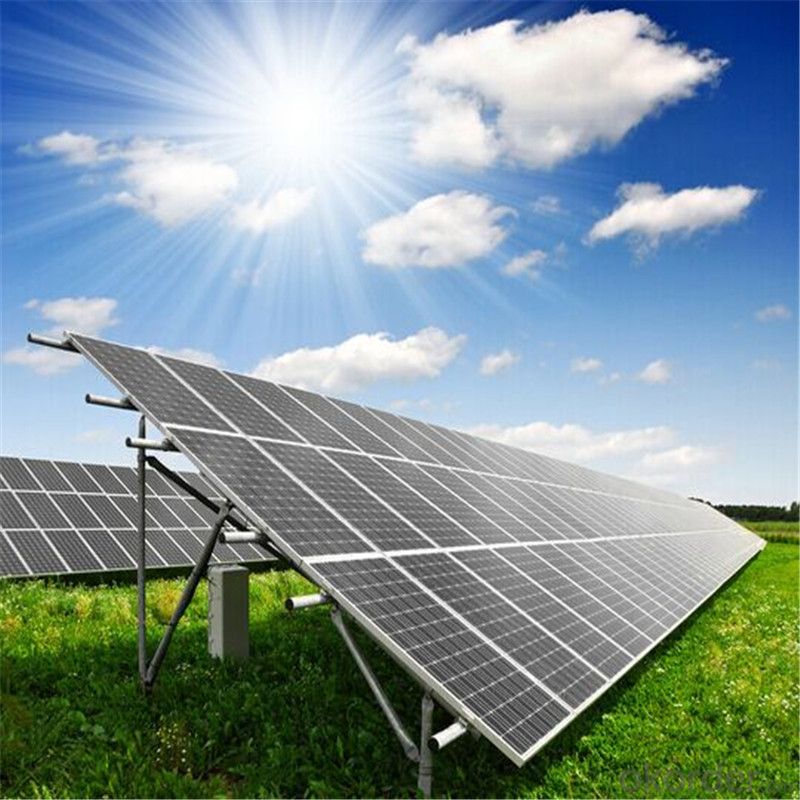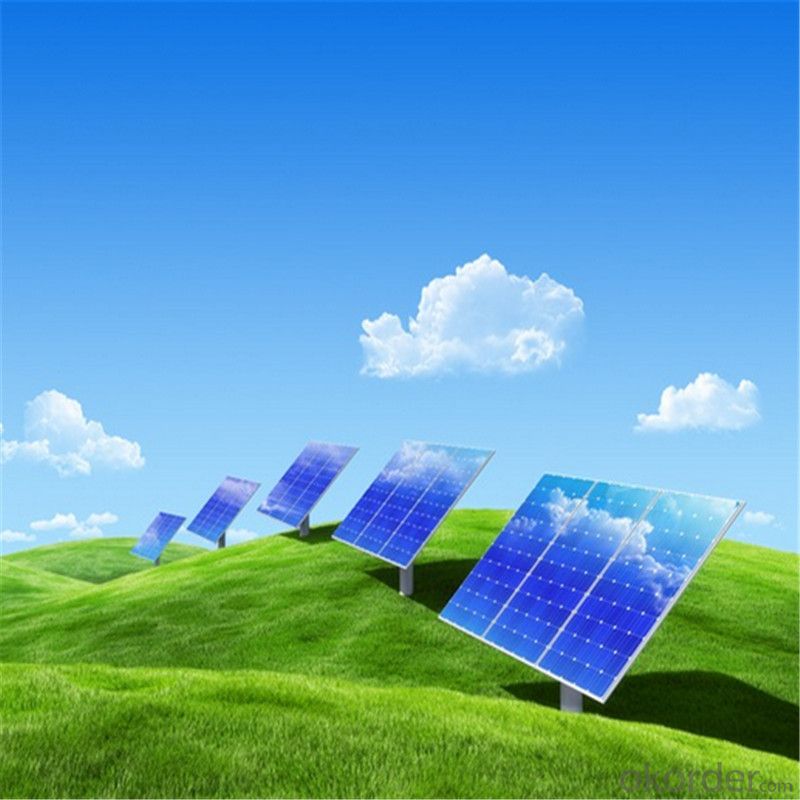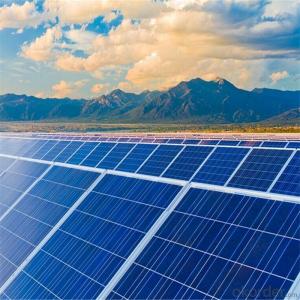Inexpensive Solar Cells:235 Watt Photovoltaic Poly Solar Panels
- Loading Port:
- China main port
- Payment Terms:
- TT OR LC
- Min Order Qty:
- 1000 watt
- Supply Capability:
- 500000 watt/month
OKorder Service Pledge
OKorder Financial Service
You Might Also Like
Specification
Instruction
Quality and Safety
1. Rigorous quality control meets the highest international standards.
2. High-transmissivity low-iron tempered glass, strong aluminium frame.
3. Using UV-resistant silicon.
4. IS09001/14001/CE/TUV/UL
5.3w-300w mono & poly solar panel supply
Warranties
1. 10 years limited product warranty
2. 15 years at 90% of the minimal rated power output
3. 25 years at 80% of the minimal rated power output
Feature
1. High efficiency and High power.
2. Long-term electrical stability.
3. Lowest price and Fastest delivery.
4. Good quality and good service.
5.Bulk supply
6. Good Warranty
7.Big Sale
8.High quality
9.More than 35 years on the lifetime.
10 DHL/Fedex/UPS/TNT/EMS etc
Images


Specification
Model | SIM-100 |
Maximum Power at ST(Pmax)W | 100Wp |
Maximum Power Voltage(Vmp)V | 18.0V |
Maximum Power Current(Imp)A | 5.56A |
Open Circuit Voltage(Voc)V | 22.0V |
Short Circuit Current(Isc)A | 5.9A |
Cell Efficiency(%) | 17.0% |
Module Efficiency(%) | 15.37% |
Operating Temperature°C | -40°C to 85°C |
Maximum system voltage | 1000V(IEC)DC |
Power tolerance | -0.03 |
Temperature coefficients of Pmax | -0.45%/°C |
Temperature coefficients of Voc | -0.27%/°C |
Temperature coefficients of Isc | 0.05%/°C |
Weight(kg) | 7.4 |
Number of cell(pcs) | 4*9 |
FAQ
We have organized several common questions for our clients,may help you sincerely:
1). What’s price per watt?
A: It’s depends on the quantity, delivery date and payment terms of the order. We can talk further about the detail price issue. Our products is high quality with lower price level.
2). Can you tell me the parameter of your solar panels?
We have different series of cells with different power output, both from c-si to a-si. Please take our specification sheet for your reference.
3). How do you pack your products?
We have rich experience on how to pack the panels to make sure the safety on shipment when it arrives at the destination.
4). How long can we receive the product after purchase?
In the purchase of product within three working days, We will arrange the factory delivery as soon as possible. The perfect time of receiving is related to the state and position of customers. Commonly 7 to 10 working days can be served.
- Q: How do solar cells impact greenhouse gas emissions?
- Solar cells have a significant positive impact on greenhouse gas emissions as they generate electricity from the sun's energy without producing any harmful greenhouse gases. By replacing fossil fuel-based energy sources, solar cells help reduce carbon dioxide and other greenhouse gas emissions, mitigating climate change and contributing to a cleaner and sustainable future.
- Q: How do solar cells perform in high altitude environments?
- Solar cells perform better in high altitude environments due to several factors. Firstly, at higher altitudes, there is less atmospheric interference, resulting in reduced scattering and absorption of sunlight. This allows solar cells to receive more direct and intense sunlight, increasing their efficiency. Secondly, the lower temperatures at higher altitudes help solar cells operate more efficiently as they generate less heat, reducing the risk of overheating. Finally, the thinner air at higher altitudes allows for better heat dissipation, further enhancing the performance and lifespan of solar cells. Therefore, solar cells are generally more effective and efficient in high altitude environments.
- Q: What is the impact of pollution or smog on solar cell performance?
- The impact of pollution or smog on solar cell performance is significant. Pollutants in the air, such as particulate matter and chemicals, can accumulate on the surface of solar panels, reducing their efficiency by blocking or scattering sunlight. This leads to a decrease in the amount of electricity generated by the solar cells. Smog, which is a combination of smoke and fog, can further exacerbate the problem by reducing the amount of sunlight reaching the solar panels. Overall, pollution and smog can significantly hamper the performance of solar cells, resulting in lower energy production.
- Q: How do solar cells perform in areas with high levels of bird droppings?
- Solar cells may experience a decrease in performance in areas with high levels of bird droppings. The droppings can create a layer of dirt and debris on the surface of the solar cells, reducing their efficiency in converting sunlight into electricity. Regular cleaning and maintenance are necessary to ensure optimal performance in such areas.
- Q: What is the role of tracking systems in maximizing solar cell efficiency?
- Tracking systems play a crucial role in maximizing solar cell efficiency by continuously adjusting the position of solar panels to optimize their exposure to sunlight. These systems enable solar panels to track and follow the sun's path throughout the day, ensuring that they are always facing directly towards the sun. By doing so, tracking systems can enhance the amount of sunlight captured by solar cells, resulting in increased energy production and overall efficiency.
- Q: Can solar cells be used on mobile devices?
- Yes, solar cells can be used on mobile devices. In fact, there are already solar-powered chargers available that can be attached to mobile devices to harness solar energy and charge them on the go. These solar cells convert sunlight into electricity, providing a sustainable and eco-friendly source of power for mobile devices.
- Q: Can solar cells be used to power large-scale industrial facilities?
- Yes, solar cells can be used to power large-scale industrial facilities. The installation of a large array of solar panels can generate a significant amount of electricity to meet the energy demands of such facilities. However, the feasibility and effectiveness of using solar cells depend on factors such as the facility's energy requirements, available space for solar panel installation, and the cost-effectiveness of implementing solar power systems compared to other energy sources.
- Q: What is the role of batteries in solar cell systems?
- The role of batteries in solar cell systems is to store the excess energy generated by the solar panels during the day, so it can be used during periods of low sunlight or at night. This helps ensure a continuous and reliable power supply from solar energy.
- Q: What's the relationship between solar energy materials and solar cells?
- There are solar cells made of many different kinds of materials, for example: Silicon thin film, compound semiconductor thin film and organic thin film shape, hundreds of compound semiconductor thin film shape and non crystalline shape (a-Si: H, a-Si:H:F, a-SixGel-x:H) III V family (GaAs, InP), II VI (CDS) and zinc phosphide (Zn3P2).
- Q: Can solar cells be used to power agricultural irrigation systems?
- Yes, solar cells can indeed be used to power agricultural irrigation systems. Solar power provides a sustainable and reliable source of energy to pump water for irrigation, helping farmers reduce their dependence on fossil fuels and electricity grids. This approach is particularly beneficial in remote areas with limited access to conventional power sources.
Send your message to us
Inexpensive Solar Cells:235 Watt Photovoltaic Poly Solar Panels
- Loading Port:
- China main port
- Payment Terms:
- TT OR LC
- Min Order Qty:
- 1000 watt
- Supply Capability:
- 500000 watt/month
OKorder Service Pledge
OKorder Financial Service
Similar products
Hot products
Hot Searches
Related keywords


























